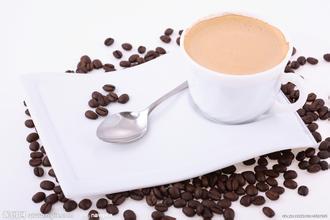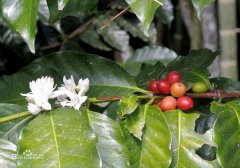Rwanda Malaba Bourbon Coffee introduces the Lutesilo producing area in the western province
Maraba coffee is grown in southern Rwanda, about 12 km (7 mi) from Butare and 150 km (93 mi) from the capital, Gigali. The project began in the Malaba area of Butare province, but was succeeded by local government organizations in 2006, and the area is now part of the Huye region of Southern province. Due to its proximity to the Great Rift Valley and the Nunwe Forest Mountains, this zone has many slopes, steep terrain and fertile volcanic soil. Coffee is grown at elevations of 1700 to 2100 meters (5,577 - 6,889 feet), usually on steep hillsides. The zone also has an average annual rainfall of 115 centimetres (45 inches). Most of this comes from the rainy season between March and May, which is also the main coffee harvest season. Temperatures at higher altitudes are slightly lower, averaging about 20°C (68°F), with small seasonal variations.
production process
coffee cherries
coffee cherries
The peak harvest season for Rwandan coffee is during the main rainy season, from March to the end of May. During harvest season, farmers spend most of their day picking coffee by hand. In the afternoon, farmers carry coffee nuts in traditional baskets woven from banana leaves to washing stations hours away. Artisans hand-pick the best coffee cherries with a deep red hue and return the rest to farmers for sale at low prices in markets outside the Malaba processing zone. The mechanic pays the farmer $0.10 per kilo. Every fortnight the guild deposited the reward into the farmer's bank account.
The technician in the processing tank will immediately clean the process, because delay will cause the sugar coating of the coffee beans to ferment, ruining the taste of the coffee. The beans are first dropped into a deep sink, where the best cherries sink to the bottom and pass through a machine that removes the skin. The floating coffee cherries are removed by technicians, processed in the same way and sold by cooperatives at lower prices on the domestic market. The beans pass through three co-op peeling and sorting machines, which remove the outer skin and sugary coating, and then pass the beans individually through vibrating filters. The filter separates the highest quality A beans from those classified as B; the two grades are carried down the hill separately in 1% gradient waterways. The process of transportation further classifies the coffee beans of each quality. About fifteen tanks at the bottom of the channel can catch different kinds of coffee beans. Coffee beans remain in water for two days and 15-20 hours for grade A beans and grade B beans respectively, allowing them to ferment slightly and convert residual sugars without seriously damaging the taste.

Important Notice :
前街咖啡 FrontStreet Coffee has moved to new addredd:
FrontStreet Coffee Address: 315,Donghua East Road,GuangZhou
Tel:020 38364473
- Prev

Boutique Coffee with low Acid and solid Flavor of Round Bean Sucrose in Chateau Kimmel, Papua New Guinea
Boutique coffee (specialty coffee) is also called specialty coffee selection coffee. It refers to coffee made from a small number of raw beans with excellent taste grown in an ideal geographical environment. Depending on the special soil and climatic conditions in which they grow, they have outstanding flavor. After strict selection and classification, this kind of coffee is hard in texture, rich in taste and stylish.
- Next

Tanzania Kilimanjaro coffee with strong sour and sweet flavor
Kilimanjaro coffee is a uniform size of large coffee beans, the color is gray-green, compared with a strong sour and sweet flavor, excellent flavor. Medium baking will give off sweetness and light sour taste, deep baking will produce soft bitterness, suitable for blending. Brewing method Kilimanjaro coffee is mainly suitable for blending, you can mix it yourself or
Related
- Does Rose Summer choose Blue, Green or Red? Detailed explanation of Rose Summer Coffee plots and Classification in Panamanian Jade Manor
- What is the difference between the origin, producing area, processing plant, cooperative and manor of coffee beans?
- How fine does the espresso powder fit? how to grind the espresso?
- Sca coffee roasting degree color card coffee roasting degree 8 roasting color values what do you mean?
- The practice of lattes: how to make lattes at home
- Introduction to Indonesian Fine Coffee beans-- Java Coffee producing area of Indonesian Arabica Coffee
- How much will the flavor of light and medium roasted rose summer be expressed? What baking level is rose summer suitable for?
- Introduction to the characteristics of washing, sun-drying or wet-planing coffee commonly used in Mantenin, Indonesia
- Price characteristics of Arabica Coffee Bean Starbucks introduction to Manning Coffee Bean Taste producing area Variety Manor
- What is the authentic Yega flavor? What are the flavor characteristics of the really excellent Yejasuffi coffee beans?

